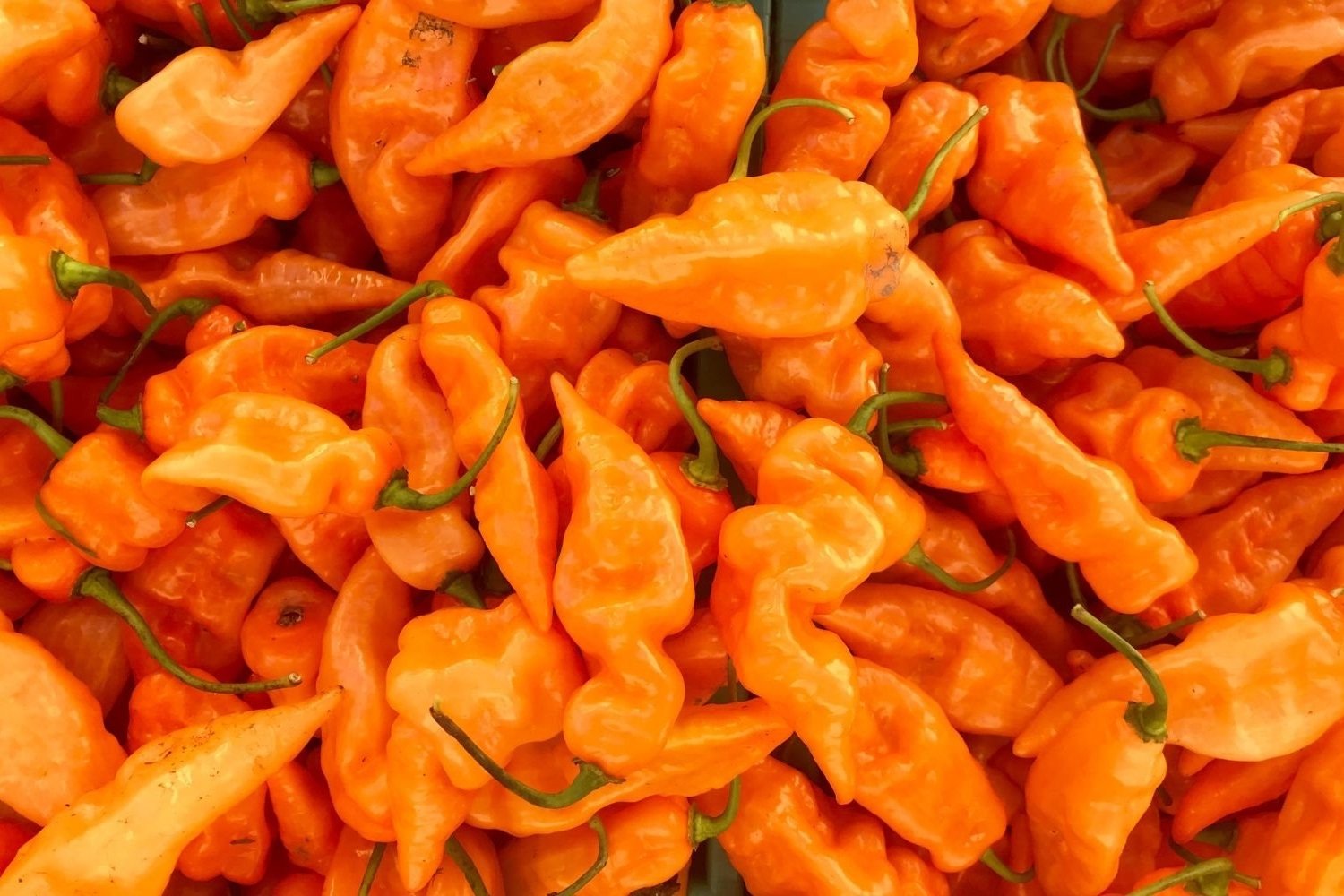
Ever heard of a pepper that's sweet but looks like it should be spicy? Meet the Habanada! This unique pepper is a twist on the fiery habanero, but without the heat. Created by plant breeders, it offers all the fruity, floral flavors of its spicy cousin without the burn. Perfect for those who love the taste of peppers but can't handle the heat, Habanada peppers can be used in a variety of dishes, from salads to salsas. Whether you're a gardener looking to grow something new or a foodie eager to try a different flavor, Habanada peppers are worth checking out. Let's dive into 26 fascinating facts about this intriguing pepper!
What is Habanada?
Habanada is a unique pepper that has captured the interest of many food enthusiasts. Unlike its fiery cousin, the habanero, Habanada offers a sweet and fruity flavor without the heat. Let's dive into some fascinating facts about this intriguing pepper.
-
Habanada was developed by accident. A plant breeder named Michael Mazourek discovered it while trying to create a milder habanero.
-
It took over a decade to perfect. Mazourek spent more than ten years breeding and selecting the best plants to create the perfect Habanada.
-
Habanada is a hybrid. It is a cross between a traditional habanero and a heatless pepper.
-
The name "Habanada" is a play on words. It combines "habanero" and "nada," which means "nothing" in Spanish, indicating its lack of heat.
-
Habanada has a Scoville rating of zero. Unlike habaneros, which can reach up to 350,000 Scoville units, Habanada has no detectable heat.
Growing Habanada
Growing Habanada peppers can be a rewarding experience for gardeners. They require specific conditions to thrive, but the effort is worth it for the unique flavor they offer.
-
Habanada plants need full sun. They require at least six hours of direct sunlight each day to grow properly.
-
They prefer well-drained soil. Habanada plants thrive in soil that drains well and is rich in organic matter.
-
Habanada plants are relatively compact. They typically grow to about 2-3 feet in height, making them suitable for small gardens or containers.
-
They have a long growing season. Habanada peppers take about 70-90 days to mature from transplanting.
-
Habanada plants are sensitive to frost. They should be planted after the last frost date in your area to avoid damage.
Culinary Uses of Habanada
Habanada peppers are incredibly versatile in the kitchen. Their sweet and fruity flavor can enhance a variety of dishes without adding any heat.
-
They can be eaten raw. Habanada peppers are delicious when eaten fresh, adding a sweet crunch to salads and salsas.
-
They are great for roasting. Roasting Habanada peppers brings out their natural sweetness and adds a smoky flavor.
-
Habanada can be used in sauces. They make a fantastic base for sweet pepper sauces and can be blended with other ingredients for a unique flavor.
-
They pair well with fruits. The fruity notes of Habanada complement fruits like mango, pineapple, and citrus.
-
Habanada can be pickled. Pickling these peppers preserves their flavor and adds a tangy twist.
Nutritional Benefits of Habanada
Habanada peppers are not only tasty but also packed with nutrients. Including them in your diet can offer several health benefits.
-
They are low in calories. Habanada peppers are a low-calorie food, making them a healthy addition to any meal.
-
Rich in vitamins. They are an excellent source of vitamins A and C, which are important for immune function and skin health.
-
High in antioxidants. Habanada peppers contain antioxidants that help protect cells from damage.
-
Good source of fiber. They provide dietary fiber, which aids in digestion and helps maintain a healthy gut.
-
Contain beneficial plant compounds. Habanada peppers have various phytonutrients that contribute to overall health.
Fun Facts about Habanada
Habanada peppers have some interesting and fun aspects that make them even more appealing to pepper enthusiasts.
-
They are sometimes called "heatless habaneros." This nickname highlights their lack of spiciness compared to traditional habaneros.
-
Habanada has a unique flavor profile. The taste is often described as floral, fruity, and slightly citrusy.
-
They are popular among chefs. Many chefs appreciate Habanada peppers for their ability to add flavor without heat.
-
Habanada is a relatively new pepper. It was only introduced to the market in the early 2010s.
-
They can be grown indoors. With the right conditions, Habanada peppers can be successfully grown indoors in containers.
-
Habanada seeds are widely available. You can find seeds for Habanada peppers from various online seed retailers, making it easy to start growing your own.
The Sweet Finale
Habanada peppers are a delightful twist on the traditional habanero. They offer all the fruity, floral flavors without the intense heat. Perfect for those who love the taste but can't handle the spice. These peppers are versatile, great for salads, salsas, or even grilling. They add a unique flavor to any dish, making them a favorite among chefs and home cooks alike. Plus, they're easy to grow in your garden. Just give them plenty of sunlight and water. Whether you're a spice lover or not, Habanada peppers are worth a try. They bring a new dimension to your culinary adventures. So next time you're at the market, grab a few and experiment. You might just find your new favorite ingredient. Enjoy the sweet, flavorful journey that Habanada peppers offer. Happy cooking!
Was this page helpful?
Our commitment to delivering trustworthy and engaging content is at the heart of what we do. Each fact on our site is contributed by real users like you, bringing a wealth of diverse insights and information. To ensure the highest standards of accuracy and reliability, our dedicated editors meticulously review each submission. This process guarantees that the facts we share are not only fascinating but also credible. Trust in our commitment to quality and authenticity as you explore and learn with us.
